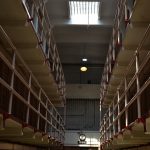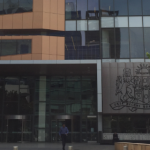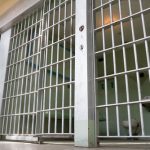Tougher Bail Laws Have Led to a Sharp Rise in Refusals

The number of adults being detained in the NSW prison system is at an all-time high. As of March this year, the prisoner population stood at 13,494, according to NSW Bureau of Crimes Statistics and Research (BOCSAR) figures.
This represented a 4.2 percent increase in the number of people behind bars in this state over the last 12 months. Defendants on remand make up most of the rise. These are people who have been refused bail and are awaiting the finalisation of their cases, a process that can take many months or even years. Many of these defendants will ultimately have their charges withdrawn or thrown out of court.
Notably, the trend coincides with record low rates of crime in NSW. BOCSAR figures released in March reveal that violent crimes and property offences are at their lowest levels since 1990, and overall crime rates are at their lowest in 40 years.
And the ever-increasing numbers of people being locked up by authorities in this state is unsurprisingly causing an overcrowding crisis in NSW prisons.
Bail refusal: a major factor
A report released last Monday outlines that Coalition government changes made to state bail laws have been fuelling this incarceration disaster. The number of people refused bail after being taken into custody has been on a steep incline since the amendments were made.
Produced by BOCSAR, the Did the 2013 Bail Act Increase the Risk of Bail Refusal? report found that since tougher bail laws came into play in January 2015, the number of average defendants refused bail by the courts is up by around 11 percent.
A brief history of bail laws
Prior to early 2014, NSW bail laws were set out in the Bail Act 1978. This Act was the result of a review that recommended a presumption of bail for all imprisonable offences.
But, due to a high-profile case at the time, the bill was passed with an exception for the presumption of bail for armed and violent robbery offences.
This exemption then paved the way for a series of amendments to the 1978 Act, which made bail more difficult to obtain. Following a further review, the 1978 Act was repealed and replaced with a more simplified framework, under the Bail Act 2013.
The 2013 Act, which came into effect in May 2014, established a two stage unacceptable risk test, which replaced the presumption system.
The first stage involved the relevant bail authority identifying any unacceptable risks the accused person might pose if they were released on bail, including whether they’d front up in court, commit a serious offence, endanger the lives of others or interfere with witnesses or evidence.
If the accused was found to pose a risk, then in stage two of the test the authority would establish whether bail conditions could mitigate the risk. If so, the accused was granted bail. If not, they were detained on remand.
Eroding the presumption of innocence
But, in September 2014, just a few months after the commencement of the 2013 Act, amendments were passed with bipartisan support that significantly tightened bail restrictions.
The Bail Amendment Act 2014 took effect on 28 January 2015. Among other things, the amendments introduce “show cause” provisions. Section 16B of the 2013 Act contains a set of serious offences where bail is refused outright. A person charged with one of these offences must then “show cause” as to why they shouldn’t be refused bail.
At the time the Amendment Act was passed in September 2014, NSW Greens MLC David Shoebridge said the legislation “undermines the presumption of innocence for every citizen in NSW, and is an attack on this fundamental principle in our criminal justice system.”
The impact of the changes
As the BOCSAR report researchers note, if an accused person is issued with a bail court attendance notice and refused bail, the individual is arrested and held on remand. At a bail hearing within the next 24 hours, the court must then decide whether to continue bail refusal or to grant bail.
The findings in the new report are from an analysis of the outcomes of 501,212 bail hearings involving 318,559 individuals over the period 1 January 2012 to 31 January 2017. The researchers stress that due to the large volume of samples, a small percentage rise is a noticeable increase.
The analysis revealed a 5 percent increase in the number of average defendants refused bail by police since the 2014 policy change came into effect, and an 11 percent increase in those being refused bail by the courts.
“We estimate that in the two year period after the legislation was introduced there were 1,500 additional bail refusals by NSW courts for non-minor offences,” the researchers concluded the report. “The associated cost to the criminal justice system would be substantial.”
Impacting the Indigenous community
And the researchers also found that the 2014 bail policy change has impacted Aboriginal people the hardest. There’s been a 12 percent increase in Aboriginal people being refused bail by police and a 13 percent increase in the court refusing them bail.
“This new report now shows how the 2014/15 changes to the Bail Act have further disadvantaged Aboriginal people,” Mr Shoebridge said in a press release. “As a result of these changes there is now more than a doubling of likelihood that First Nations people will be refused bail by the courts.”
BOCSAR figures show that in March this year there were 3,301 Indigenous adults incarcerated in NSW correctional facilities, which accounted for 24 percent of the prisoner population. This is despite Aboriginal people making up only 2.9 percent of the state’s populace.
“Aboriginal people are the most incarcerated people in the world and continue to die in custody,” said Shoebridge, the NSW Greens Aboriginal justice spokesperson. “They are the ones that bear the brunt of broken bail laws and a systemically racist criminal justice system.”
A vision for the future
As a solution to the state’s overincarceration crisis, the Coalition government has set aside $3.8 billion dollars in taxpayers’ money, not to improve conditions for those inside, but to make way for more prisoners.
The funding package was contained in the 2016 state budget. It provides for an extra 7,000 beds over a four year period, which increases the capacity of the NSW prison system so it can detain close to 50 percent more inmates than are being held at present.
NSW corrective services minister David Elliott said at the time the funding was announced that although he’d prefer the money was spent on schools and hospitals, “an efficient police force and strong bail laws” were making it necessary to expand the prison system.
The Coalition prison boom
The funding covered the re-opening of the Berrima correctional facility and two expansions at Wellington prison and Cessnock gaol. It’s also covered the construction of two new gaols at Lidcombe and Unanderra.
And the construction of Australia’s largest prison is currently underway in northern NSW. Run by the Northern Pathways consortium, which includes Serco, the Grafton Correctional Facility will have the capacity to detain 1,700 prisoners.
So, it seems that the Coalition government might have made a wise move in tightening up bail laws, as there’s no point in investing in all these new prisons if you don’t have anyone to incarcerate within them – that’s whether they’ve been proven guilty or otherwise.








